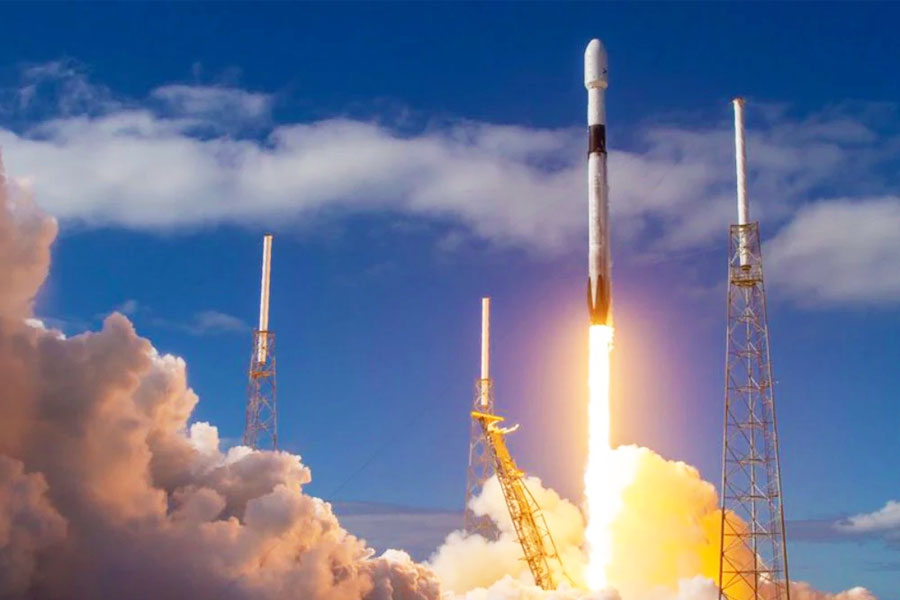UK vs Germany in the Space Race: Comparison of Microlaunchers and Launch Companies
5th Apr 2022
The commercialisation of space and the emergence of private launch companies has reached their high peak in the last decade. The leaders of the space race, the United States and China, are still unshakeable, but the competition among satellite launch companies has noticeably intensified. Leading European countries are striving to close the gap and are actively investing in aerospace startups and rocket launch companies. This article will discuss private satellite launch companies of the UK and Germany, provide their launch vehicles comparison, and evaluate companies’ prospects for participation in the global space race.
UK vs Germany in space race: who is ahead?
Both Germany and the United Kingdom are, without a doubt, leading countries in Europe and worldwide. They are at the forefront of global trends in innovation and technology. However, in space, their achievements are relatively modest, and their private space launch companies are few. Even though German scientists came up with the V-rocket, which became the prototype of the first launch vehicles, the defeat in World War II greatly set back technology development, which also affected small launch vehicle companies. The first German artificial Earth satellite, Azur, was deployed only in 1969, but to this day, there is no rocket programme.
Britain has done somewhat better when it comes to private launch companies. The first British satellite Ariel was deployed in 1962 and became the third in a row after the Soviet Union and the US. Today, the country is the largest European manufacturer of satellites and the second in the world after the USA. The UK also had its own Black Arrow rocket programme, thanks to which, in 1972, the first and only time the British Prospero satellite was sent into orbit by a British rocket. Despite its success, the programme was soon cancelled as unprofitable, and the UK returned to the US government and private companies’ aid for further launches.
The millennium has become the starting point for a radical transformation of the space industry and its companies. SpaceX proved that a private company can not only compete with the state-owned space giants but also beat them. The state monopoly in space was destroyed, and this accelerated the development of space technologies and small launch vehicle companies. Spacecraft began to diminish in size, along with satellite launch cost. The world has entered the New Space era, resulting in a new space race for small launch vehicle companies, in which both Germany and the UK plan to take the lead.
Why are satellite micrоlaunchers necessary?
Recently, the number of satellites in Earth orbit has been growing by about 1000 units annually. This creates the demand for rockets and companies to build them. Most spacecraft in orbit are CubeSats and small satellites weighing up to 500kg. Obviously, the smaller and lighter the satellite is, the more lightweight rocket is needed to deliver it into space. The main advantages of microlaunchers vs middle and Heavy rockets are:
- Lower satellite launch cost.
- Less time for preparation.
- Increased frequency.
- Fewer launchpad requirements.
- Easier transportation to the site.
The payload capacity of a super-light rocket ranges from 150kg to 1000kg, and the satellite launch cost is from 4.5 million to 15 million, which is 3-4 times cheaper as far as medium and heavy class launch vehicle comparison goes. Today, the leading private small satellite launch companies are American RocketLab (Electron rocket) and Virgin Orbit (LauncherOne). Both companies deploy satellites almost every month, and have contracts for several years in advance. In Europe, these companies are only opposed by Arianespace with the Vega rocket, but Vega is in the light class and is inferior to micro-launchers in its main components: environmental friendliness and cost.
However, very soon, the company leaders will face some hardships. Five ambitious German and UK private space launch companies promise to deploy their rockets in 2022 and beat Virgin Orbit and Rocket Lab in the space race. Who are these companies? Check out the comparison of orbital launch systems.
Germans vs. British: comparison of orbital launch companies & systems
In Germany, three companies are working on the creation of rockets for delivering small and medium payloads into space: ISAR Aerospace (Munchen), Rocket Factory Augsburg (Bremen) and HyImpulse Technologies (Neuenstadt am Kocher).
In the UK, there are only two companies — Orbex Space (Forres, Scotland) and Skyrora (Edinburgh, Scotland). The table below shows these companies’ launch vehicles comparison.
Comparison table of small satellite launchers
|
Company |
ISAR Aerospace |
Rocket Factory Augsburg |
HyImpulse Technologies |
Orbex Space |
Skyrora |
|
Launch Vehicle |
Spectrum |
RFA One |
Orbital Launcher SL 1 |
Prime |
Skyrora XL |
|
Height |
28 m |
30 m |
27 m |
19 m |
22.7 m |
|
Stages |
2 |
3 |
3 |
2 |
3 |
|
Payload mass |
700-1000 kg |
450-1600 kg |
500 kg |
180 kg |
315 kg |
|
Supported Orbits |
SSO, LEO |
GTO, Polar, ISS |
LEO |
SSO, Polar |
LEO |
|
Fuel |
LOX/propane |
RP-1 / LOX |
LOX/Paraffin |
LOX / bioLPG |
HTP/Kerosene |
So, in a launch vehicle size comparison, German companies have the lead. Their companies’ rockets are bigger and have higher payload mass as far as the comparison of orbital launch vehicles goes. At the same time, this obviously affects the cost of production and, as a result, the satellite launch cost. And even though no launch companies have announced the cost of their services as of yet, we dare to suggest that in the launch vehicle cost comparison, the more compact British carriers and companies that make them will have a competitive advantage. What both UK and German rockets have in common, though, is their modern standard:
- lightweight construction,
- additive technology engines operating on liquid low-toxic fuel,
- the ability to use different combinations of fairings for dedicated launch and rideshare,
- flexible launch conditions,
- potential for a reusable first stage.
The companies’ success will depend on who manages to enter the market first. So far, the British launch vehicles comparison looks more promising here — especially, Skyrora. The company already has a series of Skylark suborbital rockets that serve as the basis for XL development. Skyrora promises the first XL launch in the first half of 2022, and this is the most ambitious announcement so far.
In addition, there is a high probability that British rocket launch companies will launch payloads from British spaceports, which gives an advantage in the comparison of orbital launch systems. The British national space programme implies the creation of seven spaceports, most of which are located in Scotland, like Orbex Space and Skyrora. Germany is still talking about building only one spaceport, but it will be a floating platform in the North Sea and will become operational no sooner than 2023, whereas UK sites in Sutherland and Cornwall are preparing to lift off as soon as 2022. So, soon enough, we will find out whether the British rocket launch companies will get ahead of the Germans in the space race.






Thank you for your comment! It will be visible on the site after moderation.